

“A product that sells itself.”
It’s highly likely that you have heard this phrase before as you have heard “freemium” or “try before you buy.”
Even though these concepts give a good insight into what being product-led is, they are not enough to thoroughly explain what product-led growth is.
Creating a product that sells itself requires a lot of work, and it is definitely a crucial part of achieving growth. What is meant by it is that it is a self-serve product that can satisfy the needs and expectations of users and run the marketing, sales, and after-sales process to a high extent in and by itself.
Therefore, creating a product that sells itself is truly a lot of work and has many requirements, but is it all to achieving product-led growth?
It definitely is not because,
Product-led growth is not my way or the highway type of strategy.
A product-led business shouldn’t solely rely on its product to sell itself. Of course, it is crucial that you have a product that sells itself, but you may still have to do the selling in traditional ways in some cases.
Whether you are a sales or marketing-led company considering switching into a product-led company or you want to start from scratch, through this article, I will help you comprehend what is meant by a product that sells itself, how you can create a product that sells itself, and what you need to achieve product-led growth.
What exactly is Product-led Growth (PLG)?
Product-led growth (PLG) is a business methodology that is shaped around an end-user mindset. It is actually the mindset itself. Product-led businesses build their abilities of user acquisition, expansion, conversion, and retention around and on their product. You can start achieving PLG by understanding the problems, needs, and expectations of users. When you come up with solutions to those through your self-serve product, growth will come naturally.
Here is a brief yet inclusive answer to the question of what is PLG:
In a product-led company, your product is at the core of your company, and the customer is at the core of your product.
Now, I said PLG is a business methodology shaped around an end-user mindset because it starts with empathizing with your users and understanding their problems, needs, and expectations.
Successfully implementing a PLG framework requires you to not only recognize that your product is the best source of scalable and sustainable business growth for your company, but it also requires you to create company-wide alignment across all of your teams around the product, from engineering and development to sales, management, marketing, and customer service and success.
The teams of your company should work in harmony to achieve product-led growth.
What is a product-led growth strategy?
A product-led growth strategy, as the name suggests, is the effort to achieve growth through a self-serve product that can run the marketing, sales, and after-sales processes by itself for the most part. It is a strategy that aims to align teams to work on the product to make it lead the way for growth. In other words, it is the effort to bring your product to the point where it is an all-around self-serve product that can sell itself and help you grow.
Now, there is a reason why I say it “is the effort to achieve growth through a self-serve product that can run the marketing, sales, and after-sales processes by itself for the most part.”
It is because a product-led growth strategy doesn’t mean that you cannot make use of traditional methods for growth.
Like I said before, Product-led growth is not my way or the highway type of strategy.
Let me elaborate on this:
Imagine you want to start a new business that is product-led, or you want to make a transition from a sales-led business to a product-led business. You build your user acquisition, expansion, conversion, and retention abilities around and on your product, and you think that this should be enough for any type of customer.
However, this is not the case!
Think about large enterprises. They have much more concerns when it comes to integrating new products into their businesses. Varying from security concerns to further concerns about the ability to onboard users or employees to that product, these concerns should be taken care of with a real person, namely a sales representative.
When you move onto enterprises after starting a new business, you will face situations that require cross-functional buying decisions.
So, even if you didn’t plan on hiring salespeople at an early stage when you start a new product-led business, your engagement with large enterprises may require you to do so.
The same applies to a sales-led business that wants to switch into a product-led business. Of course, the transition doesn’t mean that you won’t need salespeople at all.
The survey suggests that 90% of buyers would like to engage salespeople earlier in specific buying situations.
In such situations, you need experienced salespeople who can run the process and leave no room for any concern. This means that the further you move on the road, the more salespeople you may need to integrate into your business.
So, a product that sells itself is essential for PLG, and building a product that sells itself requires a lot of effort and abilities of user acquisition, expansion, conversion, and retention build on the product, but this is not the only thing that you need to stick to for growth.
“By adopting a PLG strategy, companies have been able to use their own products to create a steady pipeline of satisfied users and hand-raisers, which they can then convert into paying customers. In addition to being highly effective, PLG also reduces overhead costs by eliminating the need to spend so much on traditional marketing and sales activities. It really is the proverbial win-win.”
Scott Maxwell - OpenView Venture Partners, Founder & Partner
The history of Product-led Growth
History has been in the making for the SaaS world in accordance with the needs of users and businesses’ abilities. The better the companies got at developing solutions with and through SaaS products, the more users thought they could find solutions to their problems and needs without intermediaries.
Let’s see its journey over the years.
#1 The 1980s - 1990s
It all started with products that you installed from physical boxes. A software product was a whole another thing back then.
On-premise software programs were expensive to create and buy.
Its compatibility was a crucial criterion for purchasing decisions. In this era, sales-led businesses were leading the way since it wasn’t as easy to make a decision to buy and integrate software into a company.
In this respect, sales representatives had to explain the product and convince CIOs by leaving no room for concerns.
#2 The 2000s
The 2000s opened up a whole new era by enabling software development through the cloud instead of on-premise data centers. Software products were now on-demand.
This was a game-changer because it reduced development costs drastically, which eventually made it much cheaper to buy. This was the beginning of mass adoption.
In the aftermath of these developments, marketing-led growth became the go-to strategy for SaaS companies because it wasn’t as challenging to build SaaS products, which also came at a low cost, making it much easier to explain and promote to non-technical people.
Compared to the sales-led strategy of the earlier era, SaaS companies did not need as many sales representatives to convince decision-makers.
#3 The 2010s and on
It’s the end-user era. It is since the 2010s and on product-led growth made its presence felt stronger and stronger.
The developments in the infrastructure and the increase in scalability paved the way for better software products. The APIs and modular tools made it much easier for developers because they now did not have to hard-code every product.
Products were now beginning to be made as self-serve as possible in line with the developments and the needs and expectations of users.
These conveniences opened up a new page in letting users try out a product for free.
Users then started to identify their own problems and needs and had the ability to learn about and try out products that can best satisfy their needs.
#4 The COVID-19 Era
Although it is still the end-user era, the COVID-19 pandemic has created conditions for product-led companies to thrive. Product-led growth has now reached all-time high potential.
Let’s look at Mckinsey’s analysis to understand how the COVID-19 has impacted buyers and sellers.
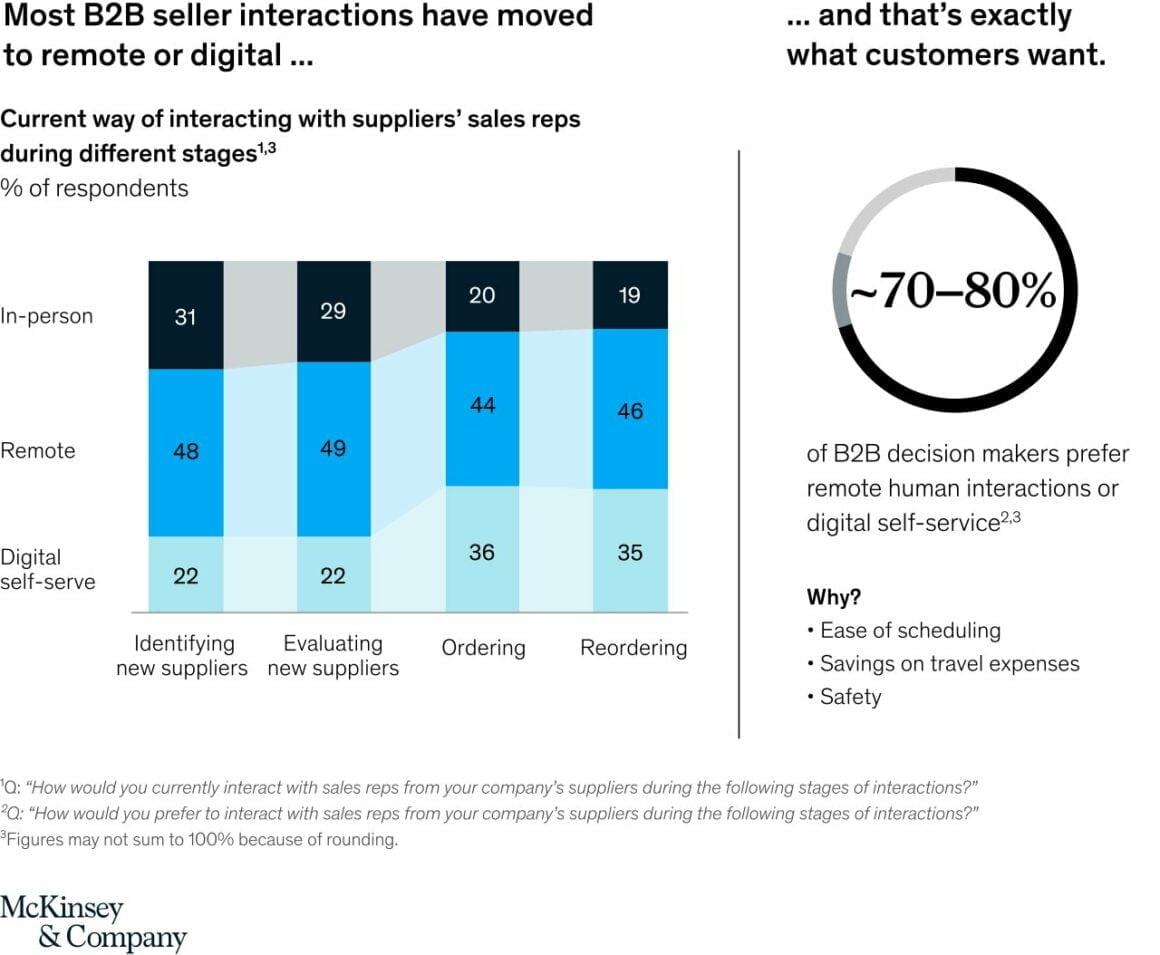
It perfectly puts it forward. This was a change that’s already been coming. However, the COVID-19 has increased the pace of this change.
You can also see it reflected in the spendings of buyers:
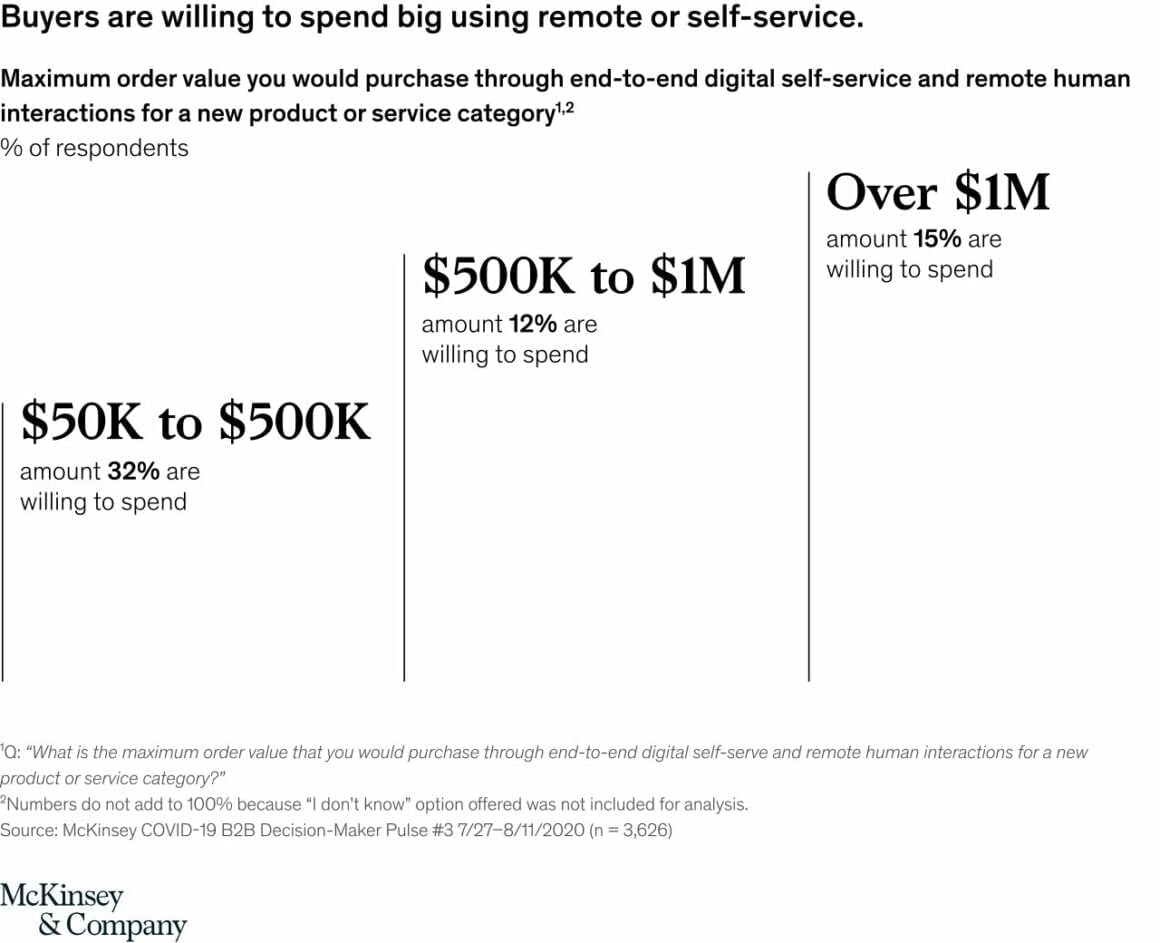
How is Product-Led Growth different than Traditional Growth Strategies
Product-led growth differs from traditional growth strategies in that as it allows for the product to lead the way and run the processes of marketing, sales, and after-sales to a high extent.
Unlike a sales-led or a marketing-led company, a product-led company aims to create a self-serve product that can do marketing itself and eventually sell itself.
One of the oldest criteria that people take into consideration when making their buying decisions is that people would like to try a product and be able to compare it with another product. In this regard, product-led companies let users experience the value of the product themselves.
For SaaS companies, being product-led can be much more achievable and beneficial because SaaS products provide the ability to run the aforementioned processes through the product.
Having said that, let me share a powerful statistic to help you further understand the expectations of users and how the product-led approach distinguishes itself from the traditional growth strategies with the way it correlates to those expectations:
Three out of four B2B buyers would rather self educate than learn about a product from a sales representative.
Looking at this statistic, you can say that product-led growth differs from other strategies in the way that it builds its strategy to help users self educate and be convinced of the value of your self-serve product.
When you consider the fact that more users now prefer to self educate than learn about a product from a sales representative, you can then understand why product-led growth has now become a go-to strategy for many businesses. If you also believe that the product-led approach is fit for your business, this twenty-step guide will give you an idea.
With respect to these expectations and the ability to run processes with a self-serve product, product-led companies benefit from lower customer acquisition costs and shorter sales cycles when compared to companies with traditional strategies.
Why is PLG important today?
Product-led growth is important today mainly because of the needs and expectations of users that are proven with the statistic that suggests three out of four B2B buyers would rather self educate than learn about a product from a sales representative.

This statistic proves that there is a reason for the consistent adoption of product-led growth. Companies try to understand and implement strategies to becoming product-led more than ever before because they can see the needs and expectations of users have been changing rapidly.
So, the more users adopt this mindset, the more businesses follow.
In this competitive business world, you should aim for growth by taking any strategy into consideration and deciding whether it fits your business. In this regard, learning more about what product-led growth is and the steps to adopting it for your SaaS business can help you achieve growth.
Let’s look at another notable statistic to convince you further into the changing customer mindset:
According to the survey, 70.2% of the respondents said they prefer to clearly understand their needs before talking with a sales representative.
To identify the problems, needs, and expectations of users, you need to have a user perspective and do comprehensive research about what those problems, needs, and expectations are and the ways in which you can come up with solutions to them via your product.
What I mean by coming up with solutions via your product is that you should have a self-serve product which in and by itself is able to:
- Do the marketing by providing attractive information about what kind of value users can find from it and how it will come up with their needs and expectations.
- Guide users through the sign-up process to finding value in your product with the help of an excellent onboarding experience.
- Provide satisfying customer support.
- Make further offers to upgrade or give a choice to downgrade.
- Collect feedback to help realize the strengths and weaknesses to build on them.
- Be scalable at any given time and point.
Although this is not all to a self-serve product, I can say that these are the building blocks of a product that a business should have in order to achieve product-led growth. Using third-party PLG platforms, you can run many of these processes with little effort.
If you also want your product to be self-serve and complete the above-mentioned steps by itself, you should use an effective third-party user onboarding software such as UserGuiding.
Continuing with why PLG is important today, I can say that things have not just been changing for individual users but also for companies that would like to make software product purchases.
Procurement is much more decentralized nowadays. Teams and employees have more freedom to choose their own tools if integrating them is not too complex or considered risky for the company.
Earlier, when I was telling you about the history of product-led growth, I said that the 2010s and on software democratized purchasing decisions for many users.
Here, you can see this democratization and freedom of employees or teams to choose their own software product being reflected in the increase in the number of apps used per company.

When you compare these numbers to the former report from 2019, you can see that the numbers have grown up by 50%.
Here are the numbers from the 2019 report:

In the age of the internet, it is now much easier to get the desired knowledge about almost anything. The choices for software products are so countless that it is now easier to compare and contrast any product than ever before.
On top of the ability to reach information easily, many products now offer freemiums, through which users can have an insight into the product itself.
When you take all these statistics and the tendency of users and your competitors to go product-led, you can clearly see that PLG is becoming more and more prominent day by day.
Benefits of Product-led Growth
I should begin by telling you that there are 21 large companies that have a product-led growth model, and the total market capitalization of these companies is $208B. You can see that these companies are performing better post-IPO.
So, in line with the business performance, the benefits of product-led growth are:
- Faster growth
- Scalability
- Efficient budget spending
- Virality through word of mouth
- Customer loyalty
- Lower customer acquisition costs (CAC)
- Shorter sales cycles
- Agility in decision making and adapting to situations
- Shorter time-to-value
- High adoption rates
- High retention rates
- Sustainable engagement
- A better understanding of user needs and expecatations through product data
Product-led Growth Metrics You Need to Track
Are you familiar with the pirate metrics known as AAARRR, first outlined by David McClure? It’s a five-step framework for SaaS growth, and it gives the growth hackers the ability to identify the weakest point in their company and see where they should concentrate their efforts.
Here are the 6 metrics of the Pirate Funnel (AAARRR):
1- Awareness – The number of people your product reaches. (Awareness was not included in Dave McClure’s original Pirate Funnel, but it was later added by Growth Tribe in 2016.)
2- Acquisition – The number of people who visit your website and sign up for your free trial.
3- Activation – The number of people who are taking the first step. (For example, sign up, download an app, or submit their first comment.)
4- Retention – The number of people who come back for a second/third/tenth time.
5- Revenue – The number of people who start paying for your product. And how much they pay.
6- Referral – The number of people who recommend your company to their friends.
In line with the pirate metrics, the Product-Led Growth Flywheel will give you a better insight into the right way of aligning your teams to providing an excellent product-led user experience to create higher satisfaction and advocacy.
Here is the Product-Led Growth Flywheel:

It is simply a framework that shows you how you should build around a satisfying user experience that should be the primary driver of your growth strategy.
Let’s elaborate on retention and move further on to other metrics that you need to track for product-led growth.
Retention Rate
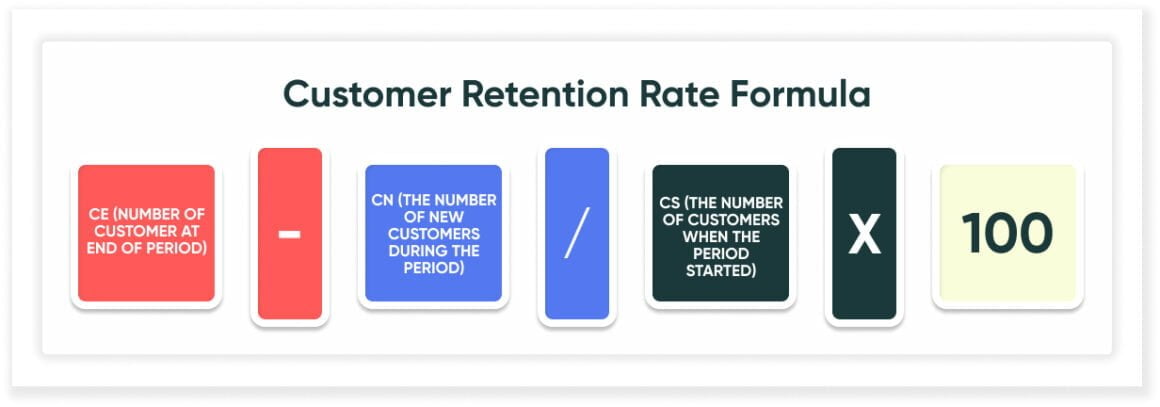
Customer retention is a strong indicator of the fact that users keep finding value in your product through their journey.
It shows that your product can stay relevant to solving their problems and needs, eventually making users continue paying for your product.
Churn Rate

Churn means customers ending their relationship with your company for any reason. A high churn rate will keep you away from your growth goals.
With the help of product data and customer feedback, you should identify the pain points and try improving them.
In this regard, churn is as crucial as acquisition when it comes to growth.
Stickiness
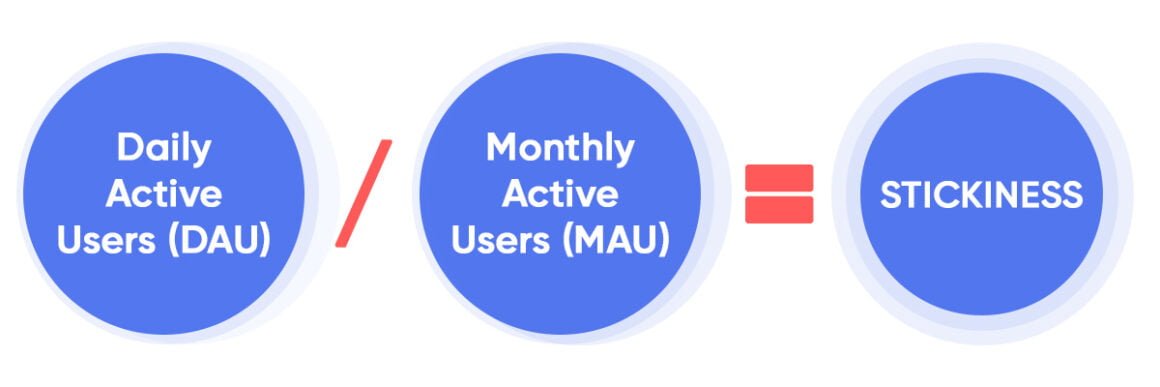
Stickiness is an important metric that you want at a high rate. It will tell you a lot about the strengths and weaknesses of your product.
It helps you understand product adoption among your target users and accordingly improve your product road map. Also, looking at the users of the segment with high stickiness, you can focus more on creating a similar audience because it is the segment that is the least likely to churn.
Feature Adoption Rate
Product adoption rate is at the forefront of many metrics that you need to track for a SaaS product’s success, and it is so much related to the metrics above. However, when giving the necessary importance to product adoption rate, you should not disregard your feature adoption rate.

Product-Qualified Leads (PQLs)
In a product-led business, PQLs are powerful indicators of the success of your product. PQLs can simply be described as the users who are activated as a result of completing key actions in your product and finding value through those actions.
Thanks to product data, identifying and improving your product’s activation event and users’ “Aha!” moment, you will have the perfect opportunity to increase PQLs.
You can find your product’s activation event through interviewing users, A/B tests, and session recordings that help you identify your users’ behaviors that correlate with conversion and retention.
Time to Value (TTV)
Time to value refers to the amount of time that it takes your users to reach their Aha! Moment.
Being product-led is about providing value to customers through your product. The longer it takes users to find value in your product, the more likely you are to have high churn rates.
Your goal is to reduce time to value so that you can have high retention rates. Providing an excellent onboarding experience, you should guide your users to finding the value.
Customer Lifetime Value (CLV)
Customer lifetime value can be described as the amount of revenue that you can expect from a customer during their journey with your business. Looking at this metric, you can identify various customer segments for revenue and have a wider perspective of acquisition and retention costs.
I believe Hubspot calculates CLV in a very efficient way:
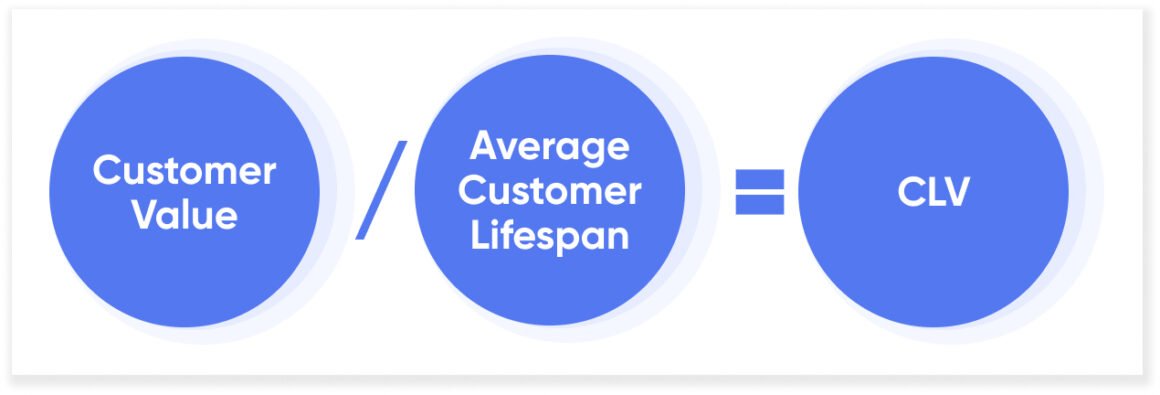
And here is how you can calculate Customer Value:
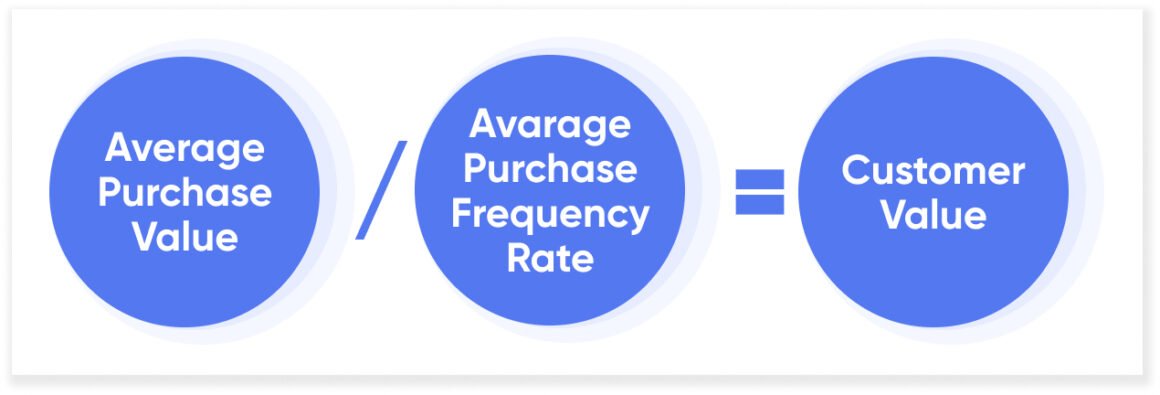
CLV is a great metric when it comes to building up a long-term strategy. By segmenting customers taking CLV into account, your company’s teams can make important decisions about which type of customers to target and how much effort, time, and money they should spend to acquire new customers and retain existing customers.
Expansion Revenue
Expansion revenue measures the revenue you generate from your existing customers through upselling, cross-selling (simply anything further than the initial purchase). It is, without a doubt, one of the most critical metrics for SaaS growth.
It has a simple reason:
Upselling your existing customers is 2x cheaper than it is acquiring new customers. Also, generating expansion revenue is 3x cheaper than new customer CAC.
You can calculate expansion revenue simply by summing the total new MRR from up-sells and cross-sells.
Average Revenue Per User (ARPU)
Average revenue per user refers to the amount of money that you can get from a single user on average. It is simply calculated as:
Total MRR / Total number of users (over a period of time) = ARPU
It is a great metric to help you have a better understanding of your potential for growth on a single customer level. You can also identify your weaknesses, strong sides, and trends in the market by looking at this metric.
Your ARPU for various segments of your users shows you if you are on the right track with your processes and targets. In doing so, you can also compare yourself with your competitors.
What being product-led means for different teams
As I said at the beginning of the article, product-led is not my way or the highway type of strategy. There is often a misconception that in a product-led company, the role of the sales and marketing teams is not as important. However, this is not true.
I explained the reasons earlier, but I’d like to remind you again that many enterprises and businesses would like to talk to salespeople because they have to make cross-functional buying decisions.
The most significant change that comes with being product-led is that the different teams now have to be in touch with each other constantly. In a PLG company, the teams are much more interrelated and intertwined with each other.
They attend each other’s meetings to find a way to provide a great customer experience.
Here is Ramli John making it clear for us:
"The thing that is a big shift is that we can't succeed with product-led if we're not all talking to each other."
Ramli John
-You can find more about the views of PLG experts here-
In a product-led company, product teams share product insights and educate other teams about the product. User feedback is spread among the teams so that they know what their customers expect from the product.
The customer success team plays a rather more important role than it traditionally plays in other companies. They are not only seen as a support team in a product-led company. They know as much about the product as other teams so that they can run the upselling processes and play a crucial role in expanding strategy as well as other processes.
In a product-led company, having an onboarding team is now becoming a standard practice. Understanding the importance of onboarding, companies are trying to gather data and constantly experiment so that they are able to adjust their onboarding to the needs of their users.
Role of User Onboarding in a PLG
User onboarding is one of the building blocks of a successful product-led growth strategy. One cannot talk about being a successful product-led company if their product fails to provide an excellent onboarding experience. If you are talking about a product that sells itself, then that same product should be a product that explains itself to users and help them extract value from itself.
Throughout the whole article, I emphasized that PLG can be best achieved by understanding the needs and expectations of users.
Here is what users say about user onboarding:
63% of customers say that user onboarding is an important aspect of their initial decision-making process. Also, 55% of users say that they have returned a product because they weren’t able to figure how to use the product.
Just by looking at these two statistics, you can say that user onboarding is a crucial part of customer acquisition and retention.
A Perfect User Onboarding to a Perfect CX
User onboarding in PLG has a great advantage, and that great advantage is the product data. Compared to earlier times, we now have a much better understanding of a user’s engagement with a product. Taking that data and integrating it into your onboarding process helps you provide a perfect user onboarding, therefore, perfect customer experience.
In our interview with Despina Exadaktylou, the Founder of Product-Led Growth Hub, she perfectly put forward what product-led onboarding is:
Now that we record the data and we can also see what it usually does in the product, you can actually take those data and put them into the onboarding; you can take the customer feedback from the customer-facing teams and insert them into the onboarding. So, your onboarding becomes your face. That is to say, how you onboard users, how you guide them to do the next steps, how you provide context will tell who you are.
Looking at the product data and segmenting your users, you can provide a satisfying onboarding experience that eventually increases product adoption and retention.
Now, let’s be more specific and talk about what user onboarding means for a product-led company.
The golden concept in user onboarding for a product-led company is what we call self-serve.
What makes PLG strategy prominent is that it is giving the users the option to try your product before buying. They are now able to compare and contrast your product with the other available products and make a decision accordingly.
If they choose your product, your responsibility is now to guide them in finding value in your product and retain them via excellent onboarding. Using product data analysis, segmenting users and their behavior, you have a huge advantage for preparing a satisfying and personalized onboarding for all.
You need to take onboarding seriously, use all that data, and do experiments to retain users and turn them into loyal and happy customers.
Examples of Product-Led Businesses
1- Slack
Slack has one of those great products that many integrated into their company as a result of a colleague’s suggestion. It is among the top companies that come to mind when talking about PLG.
They reached $7 billion in valuation in just 5 years, and it is the result of a great product that provides value and a PLG strategy that meets the expectations of many businesses of all sizes.
Let’s look at their homepage and see what brings this success:

Apart from having a great product that comes up with the needs and expectations of its users, Slack’s PLG strategy does not disregard the sales team. They build their skills around their product, and their product is successful in many ways. However, they still know that their sales team is an indispensable component of their growth strategy.
You may already know that Slack is one of the iconic companies that you can think of when talking about the “freemium” or “try for free” option. Many people think this is enough for a PLG company; however, as I emphasized throughout the article, it is not enough.
This is why you have the option to “talk to sales” in the top right corner. Slack has companies of all sizes that may want to be their customers. In line with this fact, Slack does not disregard its sales team and tries to bring them forward for those companies who may need more than a free trial to make the buying decision.
As you can see from this example, product-led companies should not disregard the advantages of other strategies. If a product-led company wants to achieve growth the combination of strategies and practices should be used while the product is leading the way.
Don’t forget, you aim for growth, and this is why you should make use of every possible practice that you think will contribute to your growth.
2- Koan
Talking about the COVID-19 pandemic and how it affected the needs and expectations of customers, I wanted to show you Koan’s transition from a sales-led to a product-led strategy as a perfect example.
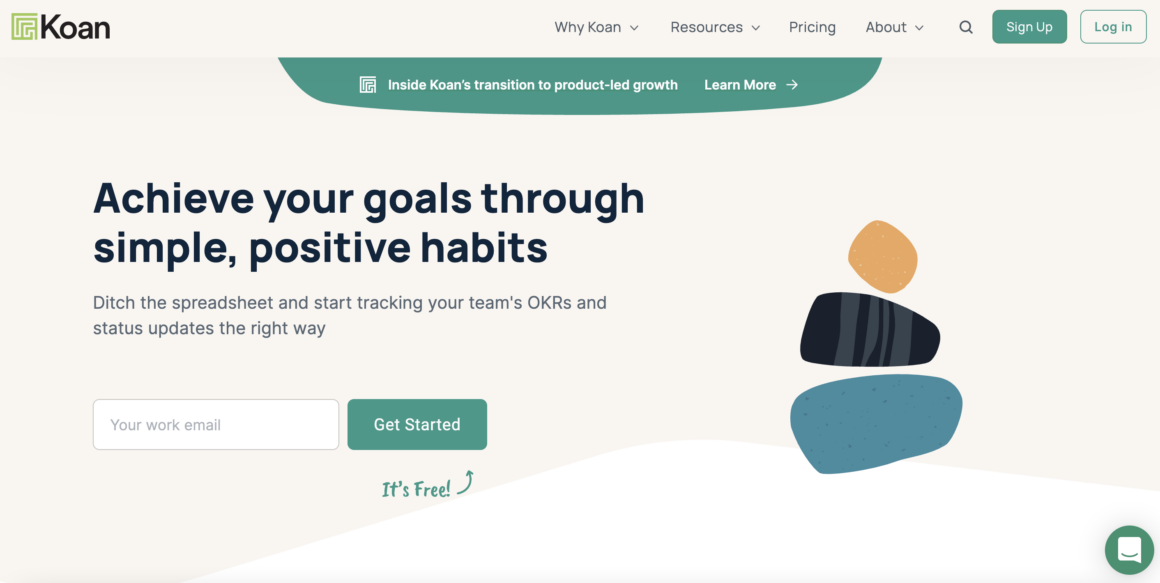
Recently, they’ve published an article that talks about Koan’s transition to PLG. I think it is an article that you all should take a look at because it is a great resource that tells about a company’s first-hand experiences of shifting to PLG.
In the article, they explain the foundation of Koan and simply say that Koan was built to help teams achieve their goals. To be more specific, they say the alignment problem is a big one and universal, and in order to solve this problem, they founded Koan.
However, as the circumstances started to change, they started looking for ways to improve their growth strategy.
They talk about the process as follows:
“But when the 2020 global pandemic hit, we were forced to adapt to challenging circumstances. The alignment software market is saturated, with all our competitors raising large amounts of capital, building huge sales teams, and spending tons of marketing dollars. To thrive, we had to approach the problem in a different way. We were going head to head with our competitors but recognized that we couldn't beat our competitors at their own game. We needed to play to our strengths, which was Reflections. We discovered that when new users filled out a Reflection once, they became repeat users 92% of the time. This was our ‘ah-ha’ moment of realizing our GTM strategy was all wrong. Koan was better positioned for product-led growth.”
From this point on, Koan knew that they had to change their mentality to make the most out of their product, and they did so.
3- Dropbox
Dropbox is another great example of having the end-user mindset and providing value to customers. Coming up with the customer needs perfectly, Dropbox has crossed $1 billion in sales in the last ten years.

Dropbox is a great example of what a product-led company looks like because they are well focused on providing value to customers through their product and using their product as a means to enhancing their virality.
What I mean is that Dropbox makes file sharing easy and accessible to users, and in doing so, they encourage users to share a referral page so that they can get more credit for storage. This is an amazing practice for attracting new users and keeping the existing ones more engaged with the product.
4- Calendly
Calendly is another company that collects the fruits of its product-led approach. Their product’s virality is achieved in two ways that are similar to Dropbox’s.
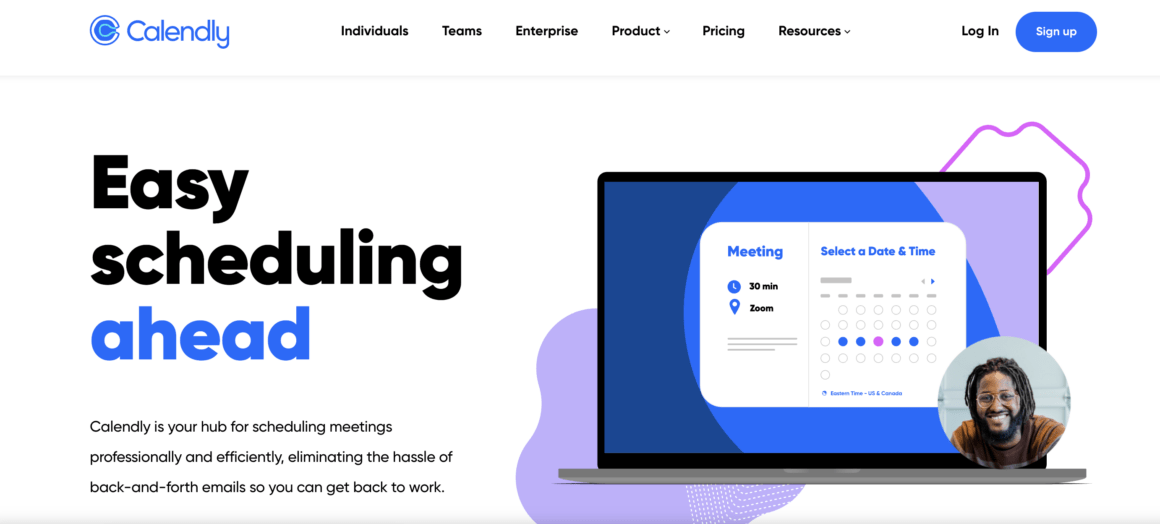
First, they make it very easy for users to schedule a meeting that may be very bothering for many people. Second, the value they provide is naturally distributed among people. That is to say, in order to have a meeting, the user needs to send a link of the platform to the others.
This way, the virality of the product increases, and more people start to use the product naturally.
Let’s simplify:
- The product provides value.
- It is easy to use.
- The branding and the value are spread through the links that users send to the people with who they want to have a meeting.
- As a result, this collaborative nature creates a “viral circle of value.”
Conclusion
Having explained to you what product-led growth is and why it is something that you should consider whether it is fit for your business or not, I can say that with the changing circumstances and the needs and expectations of users, PLG will be the go-to marketing strategy for many SaaS businesses.
Achieving PLG starts with a change in the company culture and mindset, and requires a lot of effort to create a self-serve product. However, once you adopt a successful PLG strategy that fits your business and that can be combined with some of the practices of traditional strategies, you will be satisfied with your growth goals.
Frequently Asked Questions
What does PLG mean?
PLG means Product-Led Growth. PLG is a business strategy and a mindset that aims to have a self-serve product that a company can build its abilities of user acquisition, expansion, conversion, and retention on. A PLG company aims to achieve growth through its self-serve product while making use of the traditional strategies as well.
What is product-led approach?
Product-led approach aims to create a self-serve product that comes up with the needs and expectations of users. In line with this goal, a product-led company tries to run the marketing, sales, and after-sales processes thinking about how they can attract users to the value of the product, guide them in finding the value of the product in the initial steps, and retaining them by helping them keep finding the value of the product.
What does it mean to be product-led?
Being product-led means that the product is at the core of a company, and the customer is at the core of the product.

















.svg)
.svg)
.svg)
.svg)
.svg)

.svg)
.svg)












.svg)
.svg)




.png)

















